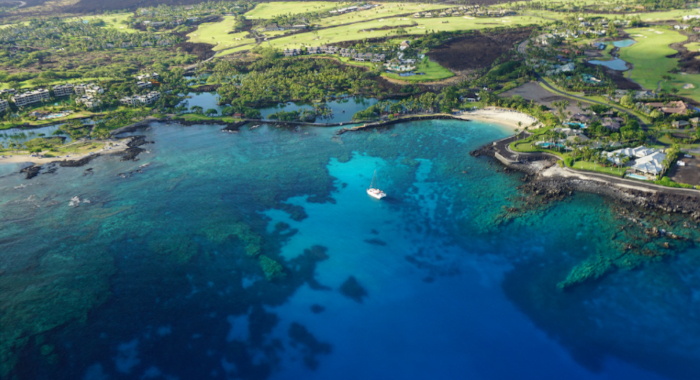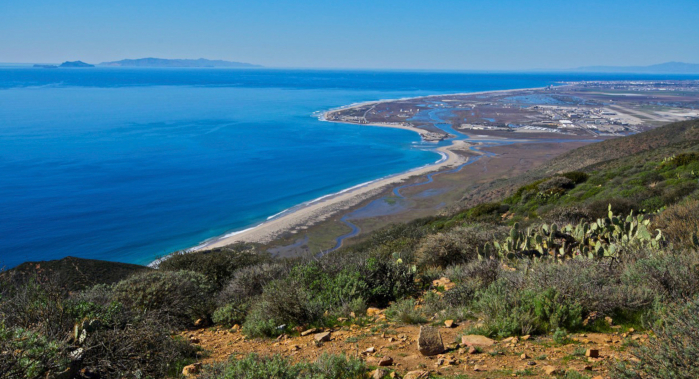With California’s population on track to reach 50 million people, the demand for energy, water, and land will continue to grow. Climate change will compound the strains on society and the environment. Most of this population growth will be centered in larger cities that are already struggling to maintain aging transportation and water infrastructure.
But nature can play an important role in the redevelopment of these systems. Wetlands treat storm water, oyster reefs buffer storm surges, and shade trees reduce heat, providing the benefits of traditional infrastructure while adding scenery and wildlife habitat.
Conservancy scientists are demonstrating how society can minimize trade-offs between development and conservation through innovative regional planning. And by showing what nature can do for cities–and what cities can do for nature–we can develop models for improving the quality of urban life, with broad application on an urbanizing planet.


Alyssa Mann, Walter Heady, Charlotte Stanley
Robert I. McDonald, Tanushree Biswas, Cedilla Sachar, Ian Housman, Timothy M. Boucher, Deborah Balk, David Nowak, Erica Spotswood, Charlotte K. Stanley, Stefan Leyk
Urban tree cover provides benefits to human health and well-being, but it is often inequitably distributed. In this study, researchers Google Earth Engine (GEE) and an automated machine learning…Brian Cohen, Kelsey Jessup, Sophie Parker, John Randall, Jill Sourial
Cities across Southern California are investing in new infrastructure to address the challenges of stormwater management. We promote the use of nature-based solutions to ensure projects both treat…Ethan Inlander, Katie Andrews, Contributors: Jennifer Chin, Sue Pollock, Mike McFadden, Scott Hardage, Scott Butterfield, Tod Rubin
With this publication, TNC in California marks a major shift in its approach to conservation easement monitoring. At the crossroads of conservation, stewardship and technology lies remote property…Dr. Winston Vickers, Karen C. Drayer, Trish Smith, Brian Cohen
Highways across the greater San Diego region in southern California are major barriers and causes of mortality for mountain lions and are contributing to the species’ genetic restriction and…Grace C. Wu, Emily Leslie, Douglas Allen, Oluwafemi Sawyerr, D. Richard Cameron, Erica Brand, Brian Cohen, Marcela Ochoa, Arne Olson
California has ambitious climate and energy policies that call for the development of significant amounts of new zero-carbon energy by midcentury. The Power of Place study looks at multiple pathways…Summary available in English and Spanish.
Parker SS, Randall JM, Pauly GB, Li E, Brown BV, Cohen BS
This report is a product of the Biodiversity Analysis in Los Angeles (BAILA) project. It provides details on why we conducted our analysis, how the partnership between the Museum and the Conservancy…Grace C. Wu, Emily Leslie, Douglas Allen, Oluwafemi Sawyerr, D. Richard Cameron, Erica Brand, Brian Cohen, Marcela Ochoa, Arne Olson
California has ambitious climate and energy policies that call for the development of significant amounts of new zero-carbon energy by midcentury. The Power of Place study looks at multiple pathways…Enjie Li, Sophie S. Parker, Gregory B. Pauly, John M. Randall, Brian V. Brown, Brian S. Cohen
This dataset is a product of the Biodiversity Analysis in Los Angeles (BAILA) project, and demonstrates a new way to evaluate urban biogeography—patterns in the distribution of species across…Carrie Schloss, Liz O'Donoghue
Enjie Li, Sophie S. Parker, Gregory B. Pauly, John M. Randall, Brian V. Brown, Brian S. Cohen
This paper presents a new way to evaluate urban biogeography—patterns in the distribution of species across urban areas. The authors developed a hierarchical, quantitative method for classifying…Gregory J. Reis, Jeanette K. Howard, Jonathan A. Rosenfield
For years the narrative of the San Francisco Bay Delta has been driven by the contention that water use by agriculture was being limited by environmental regulation. Analyzing long-term trends…Sophie S. Parker, Brian S. Cohen, James Moore
This paper discusses changes in the conservation value of lands in the California Mojave Desert caused by renewable energy development that occurred between 2009 and 2016. The authors remotely assess…Walter N. Heady, Brian S. Cohen, Mary G. Gleason, Joshua N. Morris, Sarah G. Newkirk, Kirk R. Klausmeyer, Hilary R. Walecka, Elizabeth Gagneron
Sea level rise presents a new challenge to coastal conservation. The authors quantified and mapped the vulnerability of habitats, imperiled species, and conservation lands to sea level rise throughout…Brian Cohen, Shona Ganguly, Sophie Parker, John Randall, Jill Sourial, and Lara Weatherly of The Nature Conservancy, Land IQ, Natural History Museum Los Angeles County, WRC Consulting Services Inc., Travis Longcore, University of Southern California, Connective Issue, Inc.
As a basic principle of ecological systems, a watershed’s hydrology determines the flow characteristics of its river system. These flows define what the biological characteristics of that…Jill E. Spear, Erik K. Grijalva, Julia S. Michaels, Sophie S. Parker
This paper discusses the impact of urban-dwelling plants and animals on regional wildland populations, both within and across species. The authors reviewed the global conservation literature and…Seth P. D. Riley, Trish Smith, T. Winston Vickers
Freeways are barriers to wildlife passage and gene exchange. In Southern California, mountain lion movement has been severely restricted due to this infrastructure. As a result, the mountain…Energy+Environmental Economics for The Nature Conservancy, Arne Olson, Doug Allen, Vivian Li, Emily Leslie
California leads the nation in the transition to a clean energy economy. However, current transmission planning processes limit development of new renewable resources. This report (slide deck),…